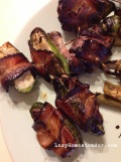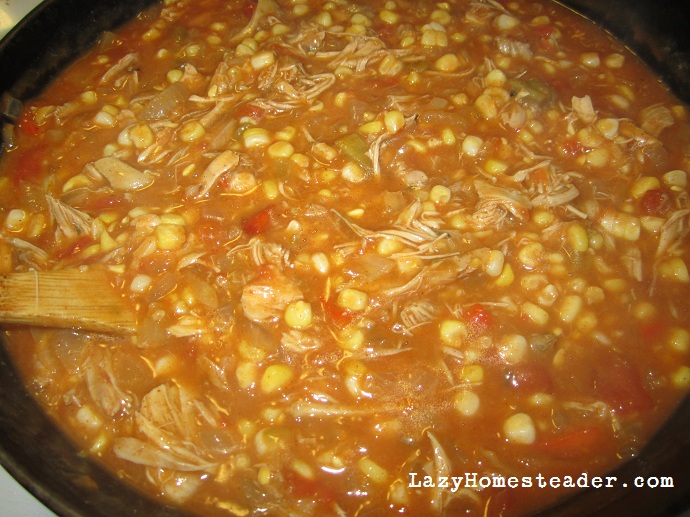Every so often I publish a blog post either about hunting or with a picture of an elk steak in it. Usually after this I get at least one or two questions about how to prepare game meat so that it doesn’t taste so “gamey.” I hear lots of people saying they would hunt but they don’t like the taste of the meat, or that they just don’t know how to cook it. Likewise, whenever we serve game to friends and family, we get lots of surprised comments about how flavorful and good the meat is, not at all gamey as they expected.
In part one of this series I talked about the differences between beef and venison and how that affects the tenderness and juiciness of the meat. It is important to know that wild game is not beef and therefore must be prepared differently and will taste different. Today I’m going to talk about processing wild game and its relationship to the “gamey” flavor that venison often has a bad reputation for. This is not a how-to, but rather an overview of the entire process.
What does venison taste like?
Deer, elk and antelope (as well as other game animals) each have a distinct flavor. Antelope (pronghorn) and whitetail tend to have a bolder, wilder flavor, while elk tends to be less so. Yak and bison taste the mildest, most similar to beef but slightly sweeter. For the purposes of this post, I’m going to refer to them all as venison, despite the differences between the animals. Mule deer, which is what we most often get in Colorado, is somewhat middle of the road on the wild-flavor scale.
First and foremost, let’s talk about what venison should taste like. It should taste:
- fresh
- richer and more “meaty” than beef
- bold with a lot of depth
- of a mild sage or juniper flavor (depending on the animal’s diet)
- according to some, similar to mutton, but much leaner
- depending on the species, mildly sweet
Venison should not taste:
- “off” or rotten
- pungent
- bitter
- overly sweet
- bland
- like beef
Venison is darker in color than beef and should not ever smell bad or be tinged green or grey. It is my opinion that the bad reputation of venison’s “gamey” flavor comes from poor processing habits and the serving of meat that is actually rancid or at least borderline.
What effects flavor:
The key to fresh tasting meat it to get it cool and skinned as fast as possible. Leaving it hot or leaving the hide on will cause it to rot quickly and leave your meaty tasting quite “pungent” (i.e.: rotten). This is important whether you plan to butcher the animal yourself or are taking it to a pro. If you leave the hide on longer than necessary or don’t cool the meat quickly, it will have a bad flavor.
Often I’ve seen hunters leave their meat hanging, skin-on, in the garage to “age” or “cure” the meat in hopes of making it more tender. While properly aged meat is delicious, doing it in your attached garage is a very good recipe for rotten deer steaks. Leaving your deer carcass hanging for days in a tree, barn, pole or garage is not aging it – it is rotting it. Colorado weather is not conducive to the traditional buck poles of the Great Lakes states. If you wish to age your venison, take it to a butcher or meat processor where it can be done safely, in a temperature controlled environment.
Additionally, avoid meat from trophy hunters, and avoid becoming one yourself. Trophy hunters are usually after great big, hormone-filled bucks in the middle of the rut (mating season). All those male deer hormones add a distinct musky flavor to the meat. Does and cows taste much cleaner and nicer than bulls and bucks depending on when the animals are harvested. Also, meat harvested during archery season in Colorado is going to tend to be more mild than meat from rifle season, because the archery season is before the rut.
Field dressing and cooling your meat:
Hunting is a tradition that is passed on from generation to generation, and so is processing meat. “Processing” is a nice term for cutting and preparing an animal for consumption, including gutting, skinning and cleaning (a.k.a. field dressing). While you can learn to do this on your own, I’ve found that most hunters have learned to do this in the field, taught by an experienced relative or friend. Rick learned from his grandfather and uncles.
This means that if the teacher has bad meat processing habits, he (or she) will most likely be passing them on to the student. And this leads to bad tasting meat.
Please, please, if you are not confident in your ability or the ability of your teacher to effectively process your animal, find someone who’s game tastes delicious to teach you. Ask tons of questions, or just take it to a professional processor.

Packing out meat using game bags.
The real work of hunting is not in the tracking down and killing of the animal. That is only where the work begins. After harvesting an animal that is fully grown, looks healthy and is of the sex you have a license for (preferably with a shot through the heart and lungs), you should immediately open it up and gut it.
Be very careful during this process not to nick the intestines with your knife or let any of the digestive juices or fecal matter touch the meat. Take your time and have someone who has more experience show you how to do this in the field. Any meat that has come into contact with fecal matter or digestive juices is essentially ruined.
Once gutted, your next move should be to remove the hide. Take care to keep the hair and any dirt or debris off of the meat. If it is a large animal, like an elk, you will need to quarter it to pack the meat out. Put the skinned meat in game bags. Game bags are inexpensive, protect your meat, and allow you to remove the hide in the field so that the meat can cool as quickly as possible. They are well worth the small investment for the taste of your meat.
If you harvest a smaller animal such as a pronghorn or whitetail and wish to drag it from the field without quartering it, leave the hide on until you get it to a point where you can skin it as quickly as possible with out the meat becoming dirty. In either case, get the animal in coolers with ice as quickly as you can. Keep coolers and ice in your vehicle. If your animal is whole, saw though the sternum, pack the cavity with ice jugs and wrap it in a tarp until you can quarter it.
If it is possible, you should begin butchering the meat as soon as you are back to your work area. If you must leave your animal overnight before you can butcher it, quarter it (if you didn’t before) and put the quarters in coolers with plenty of fresh ice jugs to get/keep it cool.
Some hunters will hang the meat, propping the body cavity open to allow it to cool overnight. We have seen this done in the Colorado mountains where it gets below freezing each night during hunting season. I don’t recommend this method of cooling because temperatures are not certain and can easily fluctuate, promoting bacteria growth on your meat. If you choose to do it, make sure to quarter the animal and get it over ice first thing in the morning; sunny Colorado daytime temps can get well above 40 degrees even in late season hunts. Also be aware that leaving your venison hanging overnight will invite bears and other predators to your camp. Rick’s uncles have lost entire sides of an animal and incurred lots of damage to barn doors that way.
Butchering game:

Double-wrap and label your meat.
Before you begin butcher your animal, thoroughly wash your hands, knives, cutting surfaces, counters or tables and any other tools you might be using. Butchering an entire animal is a big, messy job that most average kitchens can’t handle. Many hunters end up using a garage or barn. If you are among that group (we are), make sure your garage and work surfaces are scrupulously clean. You are planning on eating this meat. Don’t give yourself food poisoning. Also, make sure you can keep the area cold. Heat will rot your meat. Dress in layers while you are cutting meat if you have to. Lastly, make sure your knives are sharp and keep a sharpener handy.
While Rick’s family taught him how to process the animal up to this point, we don’t butcher the meat in the same way he was originally taught. I cook quite differently than Rick’s mother and grandmother, so I prefer our meat in different cuts and thicknesses than those Rick used to bring home. In this way, we are still learning to butcher meat ourselves. We have read lots of books and studied diagrams, and still most of our cuts of meat (besides the back-straps and tenderloin) get the general label of “steak.” Because of this, I’m not going to give specifics on butchering. But here are the the points that I feel are important to share:
- Keep everything clean.
- Keep everything cold (40 degrees or lower).
- Cut your steaks a little thicker than you think you should.
- Throw away any blood-shot or bruised meat, typically around the wound.
- Remove the silver skin (the white, inedible connective tissue over the meat). It is easier to do it now than after you cook it.
- Set odd bits and small pieces aside for hamburger or sausage.
- Package your meat into serving sizes for your family.
- Vacuum seal or double wrap your meat to prevent freezer burn.
- Label your packages clearly with the date.
Finally, when butchering, don’t dawdle. You are working against the clock to get your meat in the freezer before it rots. If you need to take an extra day off of work, do it. Don’t rush through the work, you must be careful not to cut yourself, but don’t put off the butchering. It takes priority over other activities.
—
If you get the feeling that I’m blaming the negative connotations of “gamey” meat on it being rotten, you are right. I stand firmly in the camp that if the meat tastes bad, it is bad. By getting the meat skinned and cooled as quickly as possible, and by keeping it cold while butchering it, Rick and I have enjoyed much better tasting meat. Not “gamey” at all, just fresh, wild and delicious. The time invested after the animal is down is well worth it. And enjoying the meat is the whole point.
If you’ve enjoyed what I’ve posted about cooking wild game so far, please subscribe to have my future posts shown in your RSS feed or emailed directly to your inbox by using the form in the sidebar at the right. You can also find me on Facebook. Thanks for reading.



























